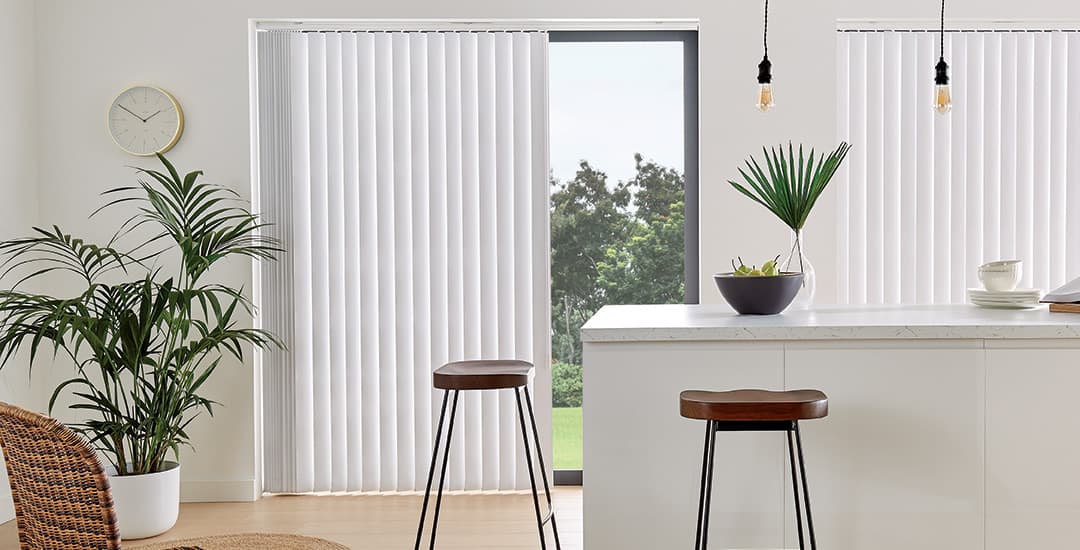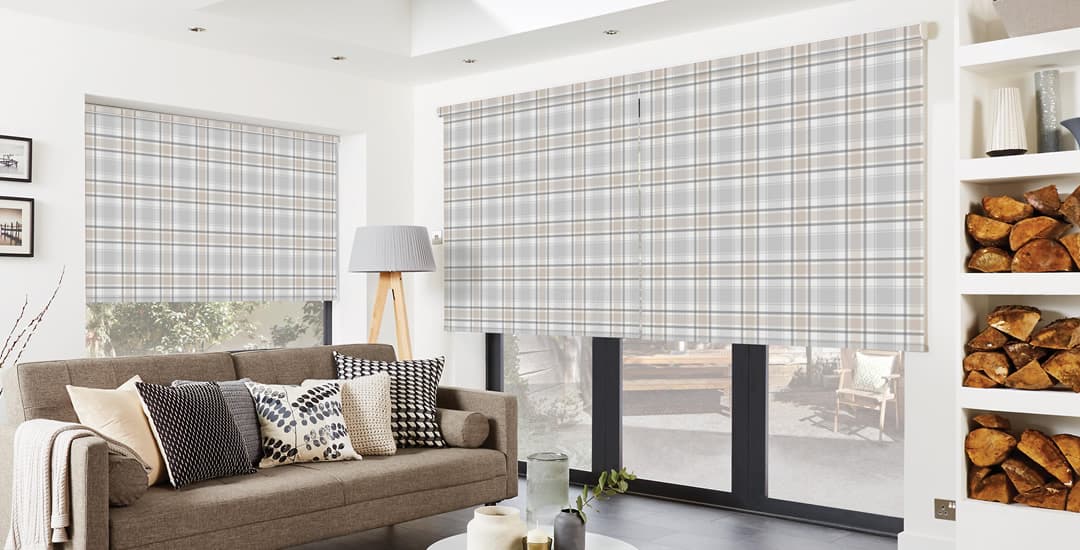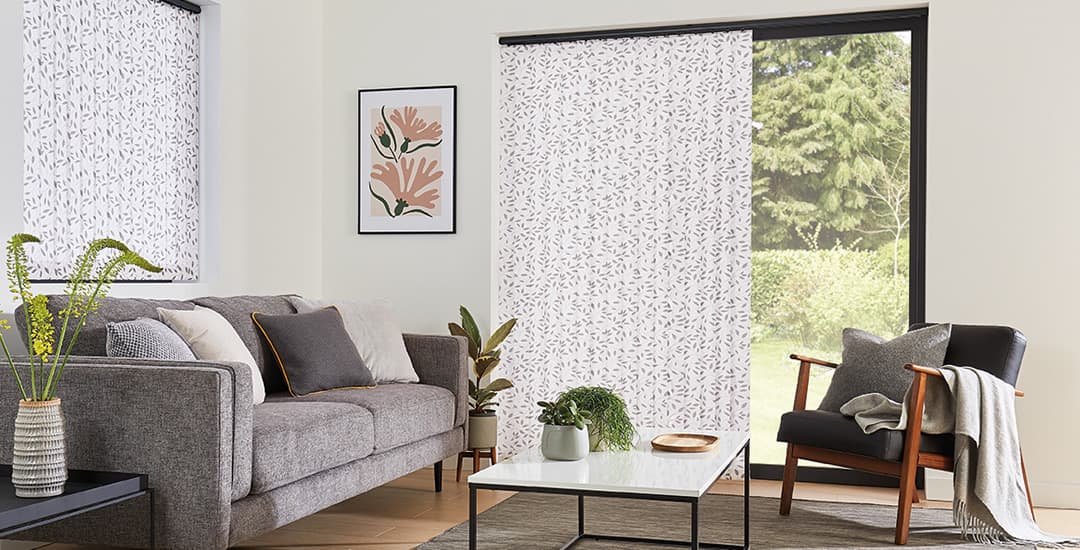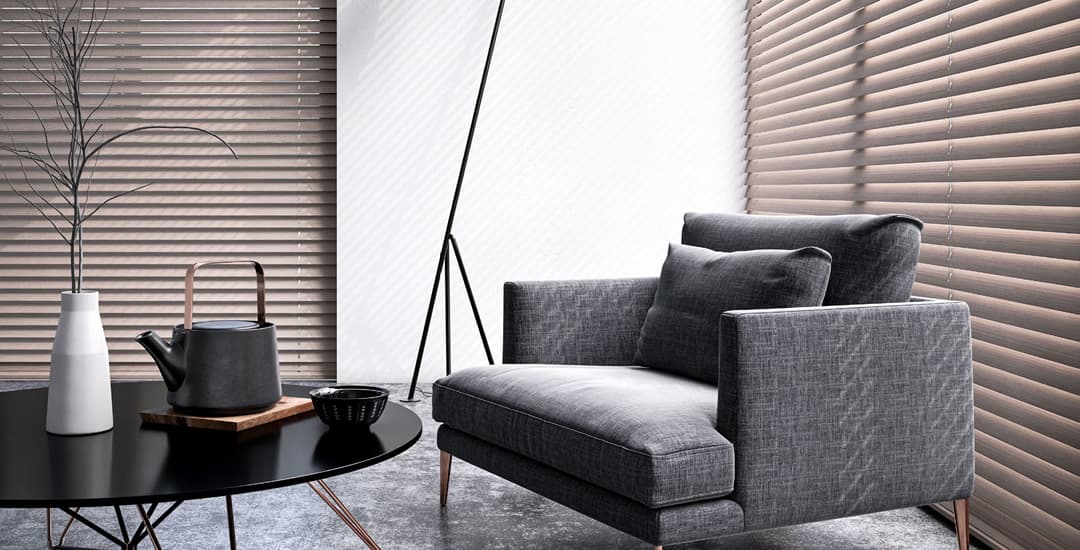
Generally, vertical blinds are the best blinds for patio doors in terms of both their appearance and function. Their vertical louvres style well with the height of patio doors, they can be made in large sizes, and they are light and easy to operate.
For really long patio doors or if you have a glazed wall, they might be your only option for a one-piece blind; or they can be made in a pair that meets in the middle like curtains in order to avoid a large stack of louvres all piled up at one side when the blind is open.
However, vertical blinds aren’t your only option, and there are also potentially a few hacks (like using multiple blinds) that will give you more options to cover your patio doors too.
So, verticals aside, what blinds look good on patio doors? This does depend to an extent on the décor in the room, but it is also true that given the overall height and size of patio doors, some types of blinds can look kind of odd or out of place on them. Aesthetics aside, some types of blinds can’t even be made large enough to cover patio doors at all (unless you use a pair of them, and sometimes not even then).
This blog post will tell you how to choose the best blinds for patio doors, and provide a bit of insight on what blinds look good on patio doors, and why.
What blinds look good on patio doors?

Unless your room is part of a preserved period property or very traditional in terms of décor, vertical blinds almost universally look good on patio doors in rooms of all types.
If you don’t like vertical blinds or think they won’t work with the style of your room, you’re now moving into the sort of territory where you’ll possibly need to use two (or more) blinds side by side to cover your patio doors, which can and usually does look good too, assuming that you choose the right type of blinds.
Roller blinds and their close cousins day and night blinds are other good blinds for patio doors too, with the caveat that you might well need to use two blinds rather than one; generally for patio doors over 2.5 metres wide. Some roller blinds can be made up to 3 metres wide, but this is dependent on the type of fabric.
Both of these types of blinds roll up around a tube and so don’t take up a lot of space at the top of the window; which can otherwise occlude the light and even mean you may have to duck to get out of the doors under the blind!
How to choose the best blinds for patio doors: avoiding the lemons

The logistics of things may well effectively rule out some types of blinds as being unsuitable for patio doors; in terms of the theoretical weight a blind would be in patio door size (even if you used two rather than one huge blind) and also, how much of a footprint over the glass or headroom the blind takes up when it’s open.
Looking at the first point, really heavy blinds aren’t just impractical (if not impossible) to fabricate and hang, but will also be heavy in operation too, to the point that potentially most people would find it really hard work to open and close them.
The potential weight issue may be self-evident when it comes to blinds made of solid materials like wood and faux-wood, but it also applies to some fabric blinds too; many first-time buyers of Roman blinds in particular find themselves surprised as the weight of the fabrics involved in them.
Roman blinds then are generally not a good choice for patio doors due to both the weight and the headroom/glass-coverage reasons; mainly the headroom one. They fold up into a stack of pleats at the top of the window when open, and when it comes to the sort of lengths you need to cover a patio door, this stack can be fairly large. They’re also very heavy in larger sizes too, to the point of impracticality.
Both faux-wood and real wooden blinds are also usually blinds to avoid for patio doors, because of the significant weights these reach in the type of drop you’d need, even if you used several of them in a row; and even if you did that, unless there are joins in the window at the same points that the blinds would abut, this is apt to look a bit odd.
Wooden and faux-wood blinds also open into a fairly deep stack, giving you the headroom/light occlusion issue once more.
Are Venetian blinds suitable for patio doors?

Finally, are Venetian blinds suitable for patio doors, and why do they warrant their own section on the matter? Essentially because they’re kind of borderline in terms of suitability and how they might look.
In their favour, they’re made of aluminium, which is reasonably lightweight, and so they can be made in larger sizes than some of the other blinds types mentioned above; although again you’d probably want two blinds on an average-sized set of patio doors; and in some cases, will find that for larger arrays, they’d be too heavy overall anyway.
They also tend to style well in most reasonably modern flavours of décor, but can look a bit too space-aged in traditional rooms.
On the downside, they do form a moderately deep stack at the top when open, albeit not to the same extent that faux-wood, real wood, and Roman blinds do, which may make them viable for some patio doors and preferences but not others.




